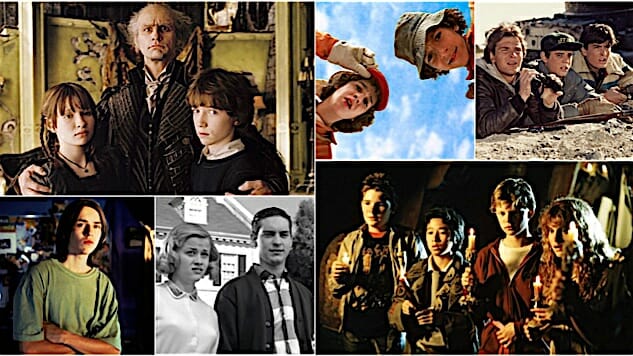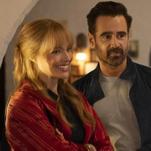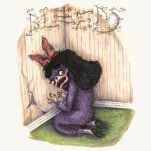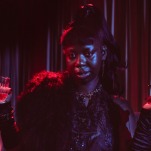Youth in Revolt: 25 Kids vs. Adults Movies

Children are now tyrants, not the servants of their households. They no longer rise when elders enter the room. They contradict their parents, chatter before company, gobble up dainties at the table, cross their legs, and tyrannize their teachers. —Some old person brazenly inventing a Socrates quote ca. 1953.
The more things change, the more they stay the same—a truism that never feels more accurate than when you look at the hand-wringing, pearl-clutching articles of today’s average newspaper columnist and compare it to the moral panic with which every commentator in era of human history has viewed the upcoming generation. The kids, authority would have you believe, are just not all right. Fortunately for the beleaguered young people getting ready to march in demonstration against the negligence that has characterized U.S. childcare, education and gun safety policy, it seems like Hollywood at least knows how they feel.
And so, for no particular reason today, of all days, we present the 25 best movies with the age-old theme of kids versus adults. We gathered these titles with some important criteria in mind. Specifically, these are stories of minors striving against adults, not merely a younger set bucking the authority of the old (so, sadly, no Iron Eagle). With a couple of too-telling-to-omit exceptions, these films come down hard on the side of the youth in the face of adults who simply don’t have their best interests in mind. And, most importantly, these all feature a group of kids who mostly go it alone, largely without adult help, against an antagonistic force that has the weight of authority or heavy-handed violence behind them.
1. Toy Soldiers (1991)
Directors: Daniel Petrie, Christopher Choyce

The “Die Hard in a___” genre was going strong in the dying days of the George H.W. Bush administration, but where Steven Seagal’s overrated Under Siege did everything it could to make its hero a glowering super-man, Toy Soldiers brings the action and the stakes down to a human level. Sean Astin, Wil Wheaton, and several of their classmates are a group of worse-behaved-than-the-other-kids at a boys-only prep school for troubled youth, run by Louis Gossett Jr. and Denholm Elliott (Marcus from Indiana Jones in one of the last roles before his death the following year).
These are kids who use their frustrated ingenuity to sneak into the basement and tap the phone line so they can drink vodka disguised as mouthwash and solicit phone sex. When their school is taken hostage by Colombian terrorists who don’t look or sound particularly Colombian, Astin and his bros reflexively rebel, playing a tense game of inside reconnaissance with the goal of taking down their captors. This is a movie where injury and death are treated as constant threats, to which the stellar cast of young actors respond with realistic nerves. It also suggests that being well-behaved is no preparation for a crisis. —Kenneth Lowe
2. Camp Nowhere (1994)
Director: Jonathan Prince

I knew more than one kid who hated his or her summer camp experience. There’s a lot to potentially unpack in the ruthless efficiency with which a whole cottage industry has popped up to essentially take kids off their parent’s hands now that every household has been harangued into being a two-income one. Camp Nowhere is not interested in any of that, and that’s okay, because it hangs much of its charms on Christopher Lloyd being a reprehensible, child-endangering scoundrel. A much-put-upon kid whose nickname is literally Mud (Jonathan Jackson) schemes alongside his best friends (including Allison Mack!) to essentially blackmail Lloyd’s unhinged aerosol cheese salesman into being the legal adult they need in order to run a massive scam on their parents: Their own fake summer camp, where they will can have their own summer on their own terms. To sell this hilariously illegal ruse, Lloyd dresses as four totally different camp counselor characters, promising disinterested parents that their kids will be psychologically tortured in accordance with their vicarious dreams.
There are fun turns from Lloyd’s Back to the Future co-star Tom Wilson and even M. Emmett Walsh and Kate Mulgrew, but the real selling point is how blithely this movie treats the sheer audacity of its main characters’ scam. Mud and his pals rip off their parents to the tune of thousands of dollars, drive without a license, purchase a whole season of Legends of the Hidden Temple’s worth of ’90s Nerf guns and video games, and commit what I’m pretty sure are a half a dozen distinct instances of wire fraud. You might wonder if it’s worth it just to get out of drama camp for a few weeks, until you think back on your own summer camp experiences and realize that, yes, yes it is. —Kenneth Lowe
3. Wild in the Streets (1968)
Director: Barry Shear

Pop music scared the ever-loving shit out of the old folks back in the ’60s, and Wild in the Streets is the earnestly ridiculous end point of that moral panic. This list simply could not be complete without it, because it is a transparent strawman argument, positing that kids who are calling out for an end to war and maybe some responsibility on the part of their elders must be headed straight for fascism, man. The story follows Max Frost (Christopher Jones), showing his confused and abusive upbringing by negligent and self-involved parents and following him as he becomes a pop singer with a rabid following. The movie was shot in the days when the voting age in the United States was still 21, and real political consternation was swirling around whether somebody should be forced to fight in a military that did not allow him to vote.
When he’s used by a grasping candidate for the Senate as a political prop, Frost realizes he can harness the rapturous adoration of the crowd to become his own demagogue. In no time at all, he and his cackling group of acid rejects (including an underused Richard Pryor, for real) badger Congress into lowering the voting age to 14. (It’s a slippery slope, lowering that voting age to 18, can’t you see?!!) Sons and daughters turn against fathers and mothers, and it all ends in Frost becoming a dictator presiding over a country that ships everybody over 35 to camps where they’re fed a steady diet of LSD and watched over by black-clad goons. It is as silly as it sounds, and a prime candidate for a rowdy bad movie night if you want a reminder of how old people think of you. —Kenneth Lowe
4. Harry Potter and the Order of the Phoenix (2007)
Director: David Yates

“The world’s not divided into good people and Death Eaters,” says Sirius Black (Gary Oldman). “We’ve all got light and dark in us. What matters is the part we choose to act on.” In the fifth installment of the Harry Potter series, the conflict explodes from the relatively simple one the protagonist has been embroiled in for the past four episodes—it’s not Harry versus Evil Guy or even kids versus adults any more, though those plot lines certainly solidify. As Defense Against the Dark Arts and ultimately all of Hogwarts is taken over by a character arguably more hideous than Lord Voldemort (the simpering and cruel Dolores Umbridge, played pitch-perfectly by Imelda Staunton and her endless pink boucle suits), it’s kids versus adults at the end, with Harry (Daniel Radcliffe) and his friends staging a showdown with Death Eaters in the Ministry of Magic, and ultimately an agonizing fight between Harry and Voldemort. But this installment of the series is also about much more than that: renegades versus institutions, good adults versus bad adults and good kids versus bad kids (among whom, Sirius correctly notes, no one is purely one or the other). It’s Hogwarts versus the Ministry, The Order versus the Death Eaters, truth versus lies and, most importantly, Harry versus Harry. The fifth film (and its source book) marks a developmental milestone for the young protagonists: While they’re not yet adults, they’re also definitely not children any more. They’ve lost the luxury of seeing in terms of “good” and “bad” and have to contend with the messy reality that (almost) everyone is a little of both. —Amy Glynn
5. Ferris Bueller’s Day Off (1986)
Director: John Hughes

John Hughes’s love letter to Chicago stars Matthew Broderick as a teenager who might be the dictionary definition of the word “scamp.” Neither the premise nor the stakes are particularly complicated: Ferris (Broderick) feigns illness, commandeers his girlfriend, Sloane (Mia Sara), and his bestie, the melancholic Cameron (Alan Ruck)—not to mention Cameron’s dad’s prized vintage Ferrari—for a little carpe diem time. The adults in the conflict are high school principal Ed Rooney (Jeffrey Jones), who’s determined to catch Ferris and nail him for truancy, and, on a more subtle and theme-deepening note, Cameron’s distant, demoralizing father (spoiler alert for anyone who’s been living at the bottom of Loch Ness since the Ford administration: The Ferrari does suffer for the sins of its father). The most truly compelling “adult combatant” in this lighthearted comedy is the domineering grownup called Time: Ferris has to be back in bed looking pasty and wan before his parents get home from work. And time, unlike Principal Rooney, can be handled in more than one way: The film is both a race against the clock and a pretty cute ode to slowing down, smelling the roses and, of course, taking over a parade float for a little Wayne Newton lip synch. —Amy Glynn
6. A Series of Unfortunate Events (2004)
Director: Brad Silberling

While the cinematic release adaptation has nowhere near the riches of either its source material or its serialized Netflix interpretation, if there were ever a movie about noble and crafty children enduring an incredible series of frying pan to fire leaps at the hands of grownups both evil and simply hapless, it is Lemony Snicket’s A Series of Unfortunate Events. The tale of the three Baudelaire children, orphaned when their parents die in a suspicious fire, is a hilariously dire one, as they are pursued through a … well, a series of events that are generally not fortunate, by Count Olaf (Jim Carrey, in one of the best-ever uses of his signature manic style), a “guardian” and terrible actor who makes it clear he’s after the Baudelaire fortune, which is being managed by the hapless Mr. Poe (Timothy Spall) until Violet turns 18. The film went through a lot of growing pains in development and only covers the first three of the 13 books in the series, but it does retain the Gothic-absurdist-steampunk esthetic of the original books and features some excellent performances (and some hilarious uncredited cameos). As things go from bad to worse for the crafty yet oddly doomed orphans, it’s hard to say whether evil or stupidity seems likelier to lead to their untimely demise, but they endure both with craft, aplomb and tremendous literacy. This film is truly one in which there are few adult allies and whenever one does appear, his or her life seems to meet an almost immediate and untimely end. Luckily, the kids have smarts, inventiveness, and perhaps most importantly, each other. —Amy Glynn
7. Akira (1988)
Director: Katsuhiro Otomo

The sum total of anime cinema from the early ’90s to present day is marked by the precedent of Katsuhiro Otomo’s Akira. Adapted from the early chapters of Otomo’s landmark manga series, Akira was the most expensive animated film of its time and a cinematic benchmark that sent shockwaves throughout the industry. Taking place 31 years after after World War III was sparked by a massive explosion that engulfed the city of Tokyo, Akira is set in the sprawling metropolis of Neo-Tokyo, built on the ruins of the former and teetering precariously on the cusp of social upheaval. The film follows the stories of Kaneda Shotaro and Tetsuo Shima, two members of a youth motorcycle gang whose lives are irrevocably changed one fateful night on the outskirts of the city. While clashing against a rival bike gang during a turf feud, Tetsuo crashes into a strange child and is promptly whisked away by a clandestine military outfit while Kaneda and his friends look on, helplessly. From then, Tetsuo begins to develop frightening new psychic abilities as Kaneda tries desperately to mount a rescue. Eventually the journeys of these two childhood friends will meet and clash in a spectacular series of showdowns encircling an ominous secret whose very origins rest at the dark heart of the city’s catastrophic past: a power known only as “Akira.” Like Ghost in the Shell that followed it, Akira is considered a touchstone of the cyberpunk genre, though its inspirations run much deeper than paying homage to William Gibson’s Neuromancer or Ridley Scott’s Blade Runner. Akira is a film whose origins and aesthetic are inextricably rooted in the history of post-war Japan, from the 1964 Tokyo Olympics and the “Anpo” student protests of that era to the country’s economic boom and the then-nascent counterculture of Bosozoku racing. Akira is a film of many messages, the least of which a coded anti-nuclear parable and a screed against wanton capitalism and the hubris of “progress.” But perhaps most poignantly, at its heart, it is the story of watching your best friend turn into a monster. Akira is almost single-handedly responsible for the early 1990s boom in anime in the West, its aesthetic vision rippling across every major art form, inspiring an entire generation of artists, filmmakers and even musicians in its wake. For these reasons and so many more, every anime fan must grapple at some point or another with Akira’s primacy as the most important anime film ever made. —Toussaint Egan
8. E.T. (1982)
Director: Steven Spielberg

Steven Spielberg’s classic is many things: an ode to friendship which resonates with children and adults alike, one of the top-grossing films of all time and the moment Spielberg’s career, on a scale of 1-10, reached 11. Though the Academy would not award Spielberg the Best Director trophy until there were more Nazis involved, E.T. remains today perhaps the most deft expression of his directorial hand. It’s also a classic example of the “the adults don’t understand or are actively against us” film. —Michael Burgin
9. The Goonies (1985)
Director: Richard Donner

For most kids, there’s something completely terrifying about packing up your things, making new friends and moving to a strange location. But unlike most kids, the Goonies have to deal with these problems while finding a pirate’s treasure, escape the Fratelli family of fugitives and still try to stay together as a group of friends. In The Goonies, members of the group are kidnapped, forced into captivity with a mutant, made to walk the plank and even fight an octopus (off-screen). While at its core, The Goonies is an adventure and a comedy, there are enough real obstacles and dangers that the stakes therein can become quite horrifying for some kids. —Ross Bonaime
10. Detroit Rock City (1999)
Director: Adam Rifkin

One of the ways one can tell whether or not a movie made for a niche audience works as mainstream entertainment is if the story and the characters still resonate with audiences who don’t fit into the narrow market the product is catering to. That’s why I know that Detroit Rock City works, because although not being a Kiss fan in the slightest, I always have a blast watching it. It does a great job as a loving tribute to the band while constructing a simple yet charming high school rock comedy about a quartet of friends doing everything they humanly can to score tickets to a mega concert by their favorite band. This is one of those films about the ’70s that gleefully fetishizes the period as every known pop-culture item from the time is on display here, from the disco vs. rock battles to Stretch Armstrong. Director Adam Rifkin gives his film an over-the-top look that resembles more of an idealized version of the period depicted through unashamed nostalgia glasses than a more realistic visual approach. This style fits Detroit Rock City’s goofy characters and storylines that border on self-parody, while reaffirming its rebellious attitude. —Oktay Ege Kozak
11. Heavyweights (1995)
Director: Steven Brill

Written by Judd Apatow and starring a cast that includes Jeffrey Tambor, Jerry and Ben Stiller, and a hilarious young Kenan Thompson, Heavyweights follows the adventures of a group of overweight young boys shipped off to Camp Hope, a fat camp run by the elder Stiller’s character and his wife. It’s established early on that the camp has been a fun and laid-back place that all the kids love attending yearly, but the kids arrive only to find that Jerry Stiller lost the camp due to inept financial management and Ben Stiller’s vicious con artist has taken over.
Ben Stiller’s glowering weirdo routine—in which he is the only one who is unaware of how straight-facedly insane he’s being—is used to great effect. Apatow’s script makes sure to show us that these kids, and most of the adults around them, are generally good, positive people who support each other. Things only go off the rails once Stiller’s craven ulterior motives come into play and he turns the camp into an abusive, brutal place where lunch can be cancelled “due to lack of hustle.” As always, it’s up to the kids to better their circumstances, even if the clear-headed adults mean well. —Kenneth Lowe
-

-

-

-

-

-

-

-

-

-

-

-

-

-

-

-

-

-

-

-

-

-

-

-

-

-

-

-

-

-

-

-

-

-

-

-

-

-

-

-






















































